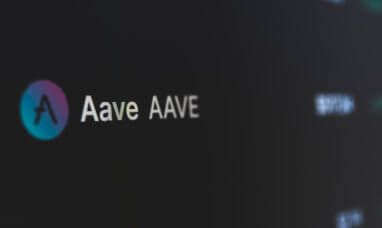Guide to Advanced Options Trading
Option contracts give you the right, but not the obligation, to purchase shares at a fixed price in the future. Options also exist for commodities, real estate, corporate financing, and many other markets. These contracts can be combined in order to take a very interesting range of positions.
Investors have invented strategies based on buying and selling option contracts at different prices. The basic building blocks of these strategies are call options and put options. In other words, contracts that give you the right to buy or sell an underlying asset at a future date.
There is a very large world of derivatives and derivative strategies, and there is definitely room for creativity. These are some of the most useful advanced options strategies available today.
Stock Repair Option Strategy
Options allow you to reduce the losses of an unprofitable stock position or even turn an unprofitable stock position into a profit. This is called repair, and this strategy provides the opportunity to recover some losses immediately and collect a potential net profit in the future.
It involves buying one call and selling two calls for every 100 shares owned. If you have a losing stock position, writing or selling the call options will give you an upfront profit in the form of premiums. This covers the cost of buying a call option, which can profit if the price recovers.
The profit gained from this position can cover the losses incurred from owning a stock that has decreased in price. There is the initial profit of selling the call options, and there is the potential future profit from purchasing one call option.
Two calls are sold at a higher price, and they will be exercised if the stock recovers to this level. The call purchased is at a lower price, and the profits from this contract can recover losses if the stock price reaches the strike price of the sold calls.
In other words, you break even at a lower price than before, and you can collect additional profits from the call option that is purchased. Additionally, you recover some of your losses immediately by selling covered calls.
Option Spreads
An option spread is very simple, you buy a contract and sell a contract at the same time. The cost of buying a contract is reduced or eliminated by the cost of selling a contract. However, you are obligated to the contract sold by the holder of the contract.
A spread is any combination of bought and sold option contracts that modify the cost and risks of the overall position. A spread can be used to lock in profits, to reduce the costs of buying contracts, to hedge against risk, or to execute complex market strategies.
Bull Spreads
A bull spread is a type of vertical spread that profits from a limited rise in the underlying asset price. When using call options, a call option at a higher price is sold or written in exchange for a cash premium. This premium offsets the cost of buying a call at a lower price, and this is called a bull call spread.
The buyer of the spread will make a profit if the price increases as they own a standard call option on the stock. However, by selling a call option at a higher price, the cost of buying that call option is reduced. It also means that the spread buyer will be forced to close their position and take profit if the owner of the sold option chooses to exercise their contract.
A bull put spread, or a credit put spread, involves taking a profit upfront by selling a put option at a higher price and buying a put option at a lower price. The initial profit is made as selling a higher-priced put option will offset the costs of buying a lower put and produce a profit.
The profit is limited to the premium of the sold option, and the loss is limited to the total cost of the trade. Similar to a bear call spread, there is a limited profit in an upward movement and a limited loss in a downward movement. The only difference is that the profit is collected upfront.
Bear Spreads
Similar to bull spreads, a bear spread is designed to profit from a limited movement in price while limiting downward risk. Whereas bull spreads profit from a limited upward movement, a bear spread profits from a limited downward movement.
A bear call spread, or credit call spread, involves selling a call option at a higher price and buying a call option at a lower price. The upfront profit, or premium, of selling the call option will offset the cost of buying a lower call option and produce an initial profit. Just as in a credit put spread, a limited profit is made initially then potentially lost if the market moves against you.
A bear put spread involves selling a put option at a lower price and buying a put option at a higher price. The initial profit from selling a lower priced put will reduce the cost of buying a put option at a higher price. The position profits if the price moves downwards, but it is limited as you sell a put option at a fixed lower price.
In both categories of spreads, the potential loss is limited at a fixed level, and the potential profit is limited at a fixed level. Spreads allow you to take a leveraged position within a fixed window with reduced total costs. The purpose is to limit risks at the expense of limited profits.
Volatility Plays
One creative application of option contracts are positions that profit purely from volatility. Option positions can profit in ways that normal stock investing cannot. Being able to invest in multiple dimensions allows you to take profit from price movements regardless of direction.
Straddle
A straddle is a position that involves buying one call and one put at the same strike price. If the price moves upwards, the call option profits while the put option expires worthless. If the price moves downwards, the put option profits while the call option expires worthless.
You are playing both sides of the market, all that is required is a substantial movement in either direction. However, buying both options at once increases your initial premium. The stock has to move far enough that one contract can cover the costs of the premium and make a profit.
This demonstrates how options can be used to move beyond directional trading and capitalize on different aspects of the market. The overall movement of a price is called volatility, and a straddle captures volatility.
If the market is not volatile and does not move far enough in either direction, both contracts expire worthless. However, the only risk is the upfront premium cost of the contracts, so your losses are limited and you are only liable to a fixed upfront cost.
Buying this position is called taking a long straddle position. Similarly, you can sell the contracts and take a short straddle. The short straddle takes profit upfront, but it has unlimited loss in either direction. The short straddle only retains profit if the market stays still.
Strangle
The strangle is much like the straddle, but it involves buying a put and a call at different prices. This means the price must move more in either direction to profit, but the initial cost of the position is reduced.
If the price increases and goes beyond the price of the call, then the call makes a net profit for the position. If the price decreases and goes below the price of the put, then the put makes a net profit for the position.
Just like the straddle, the position profits if the price moves enough in either direction. However, if the price does not move past profit levels in either direction, the contracts expire worthless. The appeal of the strangle is that it costs less upfront premium to buy than a straddle.
Buying this position is called taking a long strangle position. Just as with the straddle, you can sell a strangle in a short strangle position. The short strangle collects upfront profit, albeit lower than a short straddle, but with a wider risk profile. The seller of the short strangle still has unlimited loss potential, but the price range for losses are further apart.
Butterfly and Condor Spreads
Both the butterfly spread and condor spread involve capturing low volatility. These involve combining bull spreads with bear spreads, and they profit the most when the underlying price does not move before the expiration date of the option contracts.
The butterfly spread involves buying one call option at a lower price, selling or writing two calls at the money at the underlying price, and buying one call option at a higher price. This position produces a net profit for the buyer and decreases if the price moves in either direction.
The butterfly is limited in loss by the premiums purchased, and it makes the most profit when the contract expires at the same price. Think of it as a straddle that is paid upfront with a limited loss potential.
The condor spread works the same way, it is like a strangle for low volatility. It involves buying a bull call spread and a bear call spread at the same time. The profit is still collected upfront, but the price range for loss is wider. The stock has to move significantly in either direction for the position to start losing profit. The total losses are limited in either direction to the cost of the premiums for the spread.
Both sides of these spreads can be taken by buying or writing the options, so we can divide them further into long call, long put, short call, and short put. The long positions benefit from low volatility, and the short positions profit from high volatility.
Additionally, calls and puts can be combined to modify these spreads into the very popular iron condor and iron butterfly. These positions limit losses in either direction, but they both profit from limited price movements and low volatility.
Synthetic Positions
Along with spreads and spread combinations, options give investors the ability to take a normal stock position at a greatly reduced cost through synthetic positions. These positions mimic the position of a normal shareholder by combining option contracts.
Synthetic Long
A synthetic long involves buying a call and selling a put at the same price for the same expiration date. If the price moves upwards, the call contract you purchased will increase in value. If the price moves downwards, the buyer of the put contract can exercise their position.
In this position, you are benefiting from a stock price increase, and taking a loss from stock price decreases just as a normal shareholder would. However, you do not collect dividends as you do not actually own the stock. For this same reason, a synthetic long is a fraction of the cost to purchase the stock directly.
This reduces the cost of purchasing a normal call option, but it also opens risk to price decreases. The purpose of this strategy is leverage, to reduce the overall cost of taking a position on an underlying stock.
Synthetic Short
A synthetic short works the same way. It involves buying a put and selling a call at the same price for the same expiration date. The position is inverse, if the stock price goes down then the put option increases in price. If the stock price goes up, the holder of the call option you sold can exercise their position.
This mimics the position of a short. However, the cost to take the position is far lower than the cost to actually short sell stock through borrowing. It reduces the cost of buying a put option while opening unlimited risk from price increases, just as a short seller would take.
A synthetic position offers the same risk and reward potential as buying and owning a stock, but it greatly reduces the upfront cost. This allows investors to use smaller amounts of money to take larger positions in the stock market, and this is the core value of derivatives.
Featured Image: Twenty20








